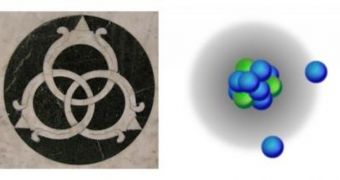Physicists in Japan have recently discovered an exotic form of carbon, one that features an extra-large halo nucleus. The central region of this atom is so large, that it even puts to shame the nuclei of heavier chemical elements such as copper and zinc. However, the new material does not exist in nature, as it was produced by researchers inside a particle accelerator. In fact, the team behind the finding says, Carbon-22 is the heaviest atom discovered to exhibit a halo nucleus, with its 16 neutrons and six protons.
Details of the work appear in the latest issue of the respected scientific journal Physical Review Letters. The effort is also highlighted with a Viewpoint in the February 8 issue of the journal Physics. The accompanying paper is authored by Florida State University experts Kirby Kemper and Paul Cottle. The thing that makes this particular class of atomic nuclei very interesting is that the particles that should have usually remained inside each individual nucleus exit its confines, and take up orbits around the remnants of the central structure. This results in a halo of subatomic particles enveloping the nucleus.
In the particle accelerator, it was demonstrated that this exotic form of carbon was more stable than previously thought. That is not to stay that it remained in its initial configuration for good, but it did so for a lot more time than researchers first thought it would be capable of. This instability is largely caused by the fact that the atom is filled with excessive numbers of neutrons. The Japanese team reveals that one of the reasons why the carbon form remained stable for so long lies in the two neutrons and a standard nucleus group, which are the main components inside the halo nucleus. The interactions that exist between these particles are very difficult to model, as the mathematics involved in such an effort are extremely complex.
As increasing numbers of particle accelerators, colliders, and beam facilities come online, particle physics appears to be set for the coming years. These new scientific installations will most likely pioneer a new sort of investigations, the ones oriented at analyzing and understanding heavier and even more exotic nuclei than Carbon-22. The very fact that this exotic compound was found hints at the amazing possibilities that await this field of research over the next decade or so.

 14 DAY TRIAL //
14 DAY TRIAL //